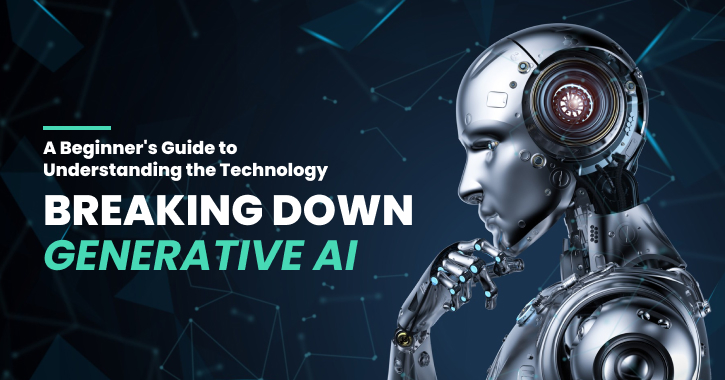Welcome! You’re about to embark on a never-ending journey to understand the fascinating world of Generative AI.
Whether you are a tech enthusiast, a startup owner, or simply curious, this comprehensive guide will help you grasp the essence of this technology.
What is Generative AI?
Let’s break it down. Generative AI is a subset of artificial intelligence that focuses on creating new, previously non-existent content. It’s like giving AI an artist’s palette and brush and then watching in awe as it paints a masterpiece that no one has ever seen before!
A Walk Through AI History
Before we dive deeper, let’s go back in time and trace the roots of AI:
- 1950s – The concept of AI was introduced. Computers started performing tasks that would normally require human intelligence.
- 1980s – Machine learning came into existence. Here, machines learned from data and improved their performance over time.
- 2010s – Deep learning, a subset of machine learning, was born. This made AI even smarter, allowing it to learn from unstructured data like images and text.
- Present – Generative AI is the new kid on the block, creating content that ranges from images, music to written text.
Generative AI: The Game-Changer
You might be wondering, “Why should I care about Generative AI?” Well, it’s because it’s a game-changer in the world of technology. This is not just an overstatement but a fact backed by its promising capabilities.
Creating Unique Content: Generative AI can create unique, high-quality content. This might be an article, a piece of music, a design, or even a video game level!
Improving Efficiency: It’s a great tool to automate tasks. This can save time and help in increasing productivity.
Driving Innovation: This technology is unlocking new possibilities across various industries, from entertainment and art to healthcare and transportation.
But remember, while Generative AI is powerful, it’s just a tool. Like a paintbrush in the hands of an artist, the true potential of Generative AI depends on how we use it.
Are you ready to explore more about Generative AI? Let’s dive in together and unravel the mysteries of this exciting technology!
Get 90+ Generative AI Marketing Tools RIGHT AWAY
Key Components of Generative AI
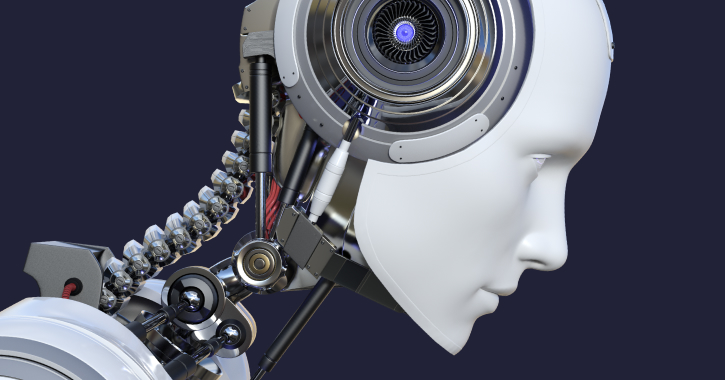
As we dive into the heart of Generative AI, we encounter some key components that are instrumental in making this technology work.
Let’s get acquainted with the stars of the show. Don’t worry; we’ll make sure you understand these in the simplest way possible!
Neural Networks
Imagine a human brain. It’s a network of neurons, interconnected and constantly communicating. That’s the basic idea behind neural networks in AI.
They are a type of machine learning model designed to mimic the way our brains work. They learn from data, identify patterns, and make decisions. Now, let’s meet the different types of neural networks.
Artificial Neural Networks (ANNs)
Just like the name suggests, ANNs are modeled after the human brain. They consist of artificial neurons or “nodes” connected together. The magic of ANNs lies in the connections between these nodes, where learning happens. Here’s how they work:
- Inputs are fed into the network. This could be anything from a line of text to a picture of a cat.
- The inputs pass through the hidden layers of nodes. Each node applies a mathematical operation to the input, altering it slightly.
- Finally, the output layer gives us a result based on what the network has learned from the input data.
Convolutional Neural Networks (CNNs)
Have you ever wondered how Facebook recognizes faces or how self-driving cars identify pedestrians? The answer is CNNs. They are specialized types of neural networks designed to process grid-like data such as images.
Here’s a simple breakdown:
- The convolutional layer is the star here. It applies filters to the input, detecting features like edges and shapes.
- The pooling layer then reduces the size of the feature maps, simplifying the information and making the network more efficient.
- The fully connected layer then classifies the image based on the detected features.
Recurrent Neural Networks (RNNs)
Let’s say you’re reading a novel. To understand the story, you need to remember what happened in the previous chapters, right?
RNNs work in a similar way. They’re designed to remember past information and apply it to current tasks, making them great for tasks involving sequential data like text or speech.
- RNNs have loops in their architecture, allowing information to persist.
- They take the current input and the previous ‘memory’ to produce the output.
- For example, when processing a sentence, an RNN would consider each word and its context within the sentence.
As you can see, each type of neural network has its specialty. ANNs are the generalists, CNNs are the image experts, and RNNs are the memory specialists. Together, they form the backbone of Generative AI, each playing a unique role in creating and innovating.
Understanding these key components is like getting a backstage pass to the world of Generative AI. You’re no longer just a spectator; you’re part of the action.
Let’s continue our journey and see how these neural networks make magic in the realm of Generative AI!
Generative Models
Now that you’ve got a handle on neural networks, let’s move onto another crucial part of Generative AI – the generative models.
Think of these models as the architects of the AI world. They design and construct new, original pieces using the tools provided by neural networks. Let’s meet the key players: Variational Autoencoders (VAEs), Generative Adversarial Networks (GANs), and Transformer models.
Variational Autoencoders (VAEs)
VAEs are like talented forgers in the art world. They can create new works that look convincingly like the real thing. But how do they do it?
- VAEs are built with two main parts: an encoder and a decoder.
- The encoder takes in the input data and compresses it into a simpler form, known as a latent representation.
- The decoder then takes this latent representation and reconstructs the original data as closely as possible.
- The cool part? After training, we can use the decoder to generate new data that looks a lot like our training data.
Imagine training a VAE on images of dogs. Once trained, you could use it to generate a brand new image of a dog that doesn’t exist in the real world!
Generative Adversarial Networks (GANs)
GANs are like a pair of artists – one is the forger, and the other is the critic. They work together to create and refine the output.
Here’s a closer look:
- GANs have two parts: a generator and a discriminator.
- The generator creates new data, similar to the forger artist.
- The discriminator, like the critic, tries to determine if the data from the generator is real or fake.
- The two parts are trained together, with the generator getting better at creating realistic data and the discriminator getting better at spotting fakes.
The result? Over time, the generator learns to produce incredibly realistic data. GANs have been used to create everything from realistic human faces to new styles of art.
Transformer Models (e.g., GPT, BERT)
Transformer models have changed the field of natural language processing. They’re like the master linguists of the AI world, understanding and generating human language in a way that was previously unimaginable.
Let’s take a quick look at two famous transformer models:
- GPT (Generative Pretrained Transformer): GPT models, like the one you’re interacting with now, are incredible at generating human-like text. They predict the next word in a sentence, considering all the previous words. This allows them to generate coherent and contextually relevant sentences, paragraphs, and even whole articles!
- BERT (Bidirectional Encoder Representations from Transformers): BERT models read the entire sentence at once, which allows them to understand the context of each word more accurately. This makes them exceptional at understanding and answering questions about a piece of text.
Understanding these generative models brings you one step closer to mastering the concept of Generative AI. These models, built on the foundation of neural networks, are the creative force behind Generative AI, crafting new, original content from the patterns they’ve learned.
Remember, this is just the tip of the iceberg. The world of Generative AI is vast, and it’s evolving every day.
Generative AI Applications
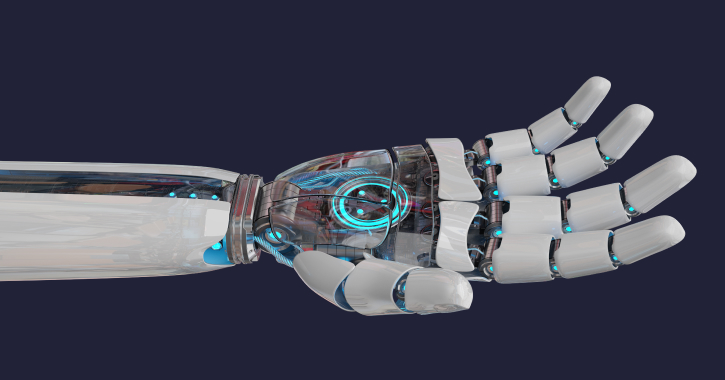
Now that we’ve got the technical bits out of the way let’s explore the fun part – the applications of Generative AI!
From creating art and composing music to designing video games and writing code, the possibilities are virtually limitless.
Natural Language Processing
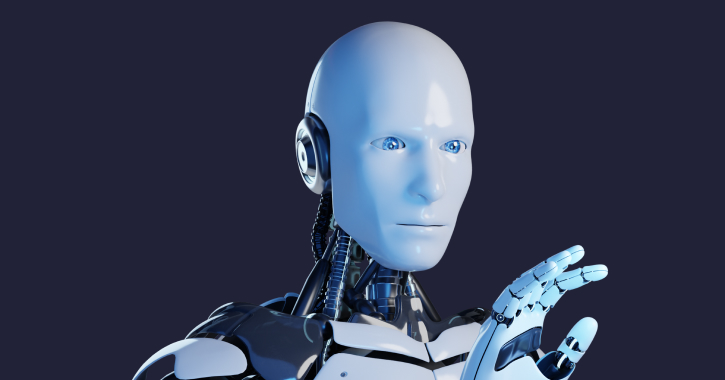
NLP is all about how computers understand, interpret, and generate human language. It’s what powers your favorite voice assistant, chatbot, or language translation app. With Generative AI in the mix, these applications are becoming even more sophisticated and human-like.
Text Generation
One of the most impressive feats of Generative AI in NLP is text generation. Remember when we talked about GPT models? This is where they shine:
- They can write coherent and contextually relevant pieces of text. This could be anything from a simple sentence, a response to a question, or an entire article!
- It’s not just about volume but also creativity. For instance, Generative AI can write poetry, stories, and even scripts for plays.
- They’re also great at filling in the blanks. Given a prompt, they can complete the text in a way that makes sense.
So, the next time you read a news article online, don’t be surprised if it was written by an AI!
Chatbots and Virtual Assistants
Ever asked Siri about the weather or sought help from a customer service chatbot? That’s Generative AI in action:
- Generative AI powers these chatbots and virtual assistants, enabling them to understand your queries and generate human-like responses.
- They’re getting better at understanding context, so conversations feel more natural and, of course, less like talking to a robot.
- They can handle a wide range of tasks, from scheduling appointments to answering complex customer service questions.
The best part? They’re available 24/7 and can handle multiple queries at once, making them incredibly efficient!
Machine Translation
Anyone who’s traveled to a foreign country or tried learning a new language will appreciate this one. Generative AI is revolutionizing machine translation:
- It’s not just about direct translation anymore. Generative AI can consider the context and nuances of the language, resulting in more accurate translations.
- They can translate in real-time. Imagine having a conversation with someone who has the capability to speak a different language and having a Generative AI translate for you on the spot!
- They’re even capable of translating languages with few available resources, thanks to transfer learning techniques.
Whether you’re translating a menu or a novel, Generative AI is making the world a little smaller and more connected.
Generative AI is making significant strides in natural language processing, enabling machines to read, understand, and generate human language like never before. The result?
More efficient services, improved communication, and a whole new way of interacting with technology.
And remember, this is just the beginning. As Generative AI continues to evolve, who knows what other exciting applications we’ll see in the future!
Get 90+ Generative AI Marketing Tools RIGHT AWAY
Computer Vision
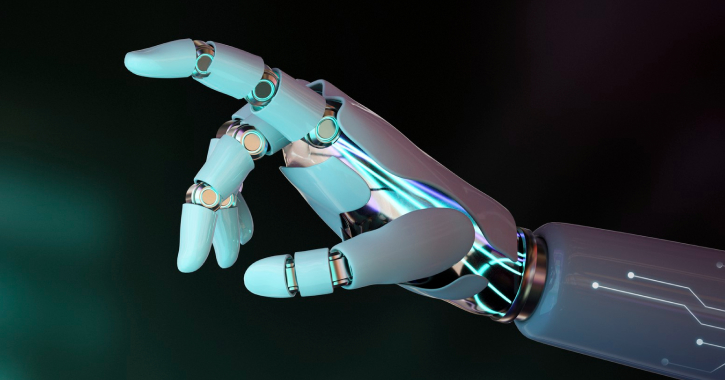
Moving on from language, let’s dive into another area where Generative AI is making a substantial impact: Computer Vision.
Just like humans use their eyes to understand the world, computers use cameras and algorithms to interpret visual data. With Generative AI, they can not only understand what they see but also create entirely new images!
Image Synthesis
Have you ever seen a picture of a dog that doesn’t exist or a portrait that was never painted by a human artist? Welcome to the world of image synthesis:
- Generative AI, especially Generative Adversarial Networks (GANs), can generate entirely new images based on their training data.
- For example, after learning from a dataset of dog pictures, the AI can create a believable image of a dog breed that doesn’t exist in the real world!
- The possibilities are endless. From imaginary landscapes to fashion designs, Generative AI can create a vast array of visual content.
The next big artist might just be an AI!
Object Recognition
Object recognition is another exciting application of Generative AI in computer vision. It’s all about teaching computers to identify and categorize objects within an image:
- Think of it like playing ‘I Spy’ with a computer. You show it an image, and it tells you what objects are in the picture.
- With the help of Convolutional Neural Networks (CNNs), Generative AI can recognize a wide array of objects, from cats and dogs to cars and buildings.
- This technology powers many applications, from self-driving cars that need to recognize pedestrians and other vehicles to social media platforms that auto-tag your photos.
If you’ve ever used a filter to find all your beach photos, you’ve got object recognition to thank!
Style Transfer
One of the most visually stunning applications of Generative AI in computer vision is style transfer. This is where AI gets really creative:
- Style transfer involves taking the style of one image (like a painting) and applying it to another image (like a photograph).
- Imagine turning your selfie into a Van Gogh painting or making your video look like a watercolor animation. That’s a style transfer in action!
- It uses a type of neural network called a “neural style transfer” network, which separates and recombines the content and style of an image.
With style transfer, anyone can create amazing art in a few clicks!
We are just scratching the surface of what’s possible. As Generative AI continues to evolve, the future of computer vision looks brighter than ever!
Audio and Music
From language and vision, we now move to another captivating realm where Generative AI is creating waves – the world of Audio and Music.
Just as it has learned to understand and generate text and images, AI is now turning its attention to sound, giving rise to a host of fascinating applications.
Speech Synthesis
The ability to convert text into spoken words, known as speech synthesis, is a powerful tool in the AI arsenal:
- You’ve probably interacted with this technology when you’ve asked your smart speaker a question or used text-to-speech software.
- Generative AI is making speech synthesis more natural and expressive. It is not just about getting the words right but also the rhythm, intonation, and emotion in the speech.
- Picture this – you type a message, and a Generative AI turns it into a voice note that sounds just like you!
Music Composition
Ever thought AI could be a musician? Well, it’s happening:
- Generative AI can create new pieces of music based on its understanding of musical structures and patterns. It’s like having a digital Beethoven or Beyoncé on your computer!
- You input a genre, mood, or even a few notes to start a melody, and the AI composes a unique piece of music.
- Whether it’s creating soothing background scores for games or composing entire symphonies, Generative AI is showing it has a knack for music.
Who knows, the next big hit on the radio might be composed by an AI!
Audio Denoising
Anyone who has ever tried to have a conversation in a noisy café or listen to an old recording knows how annoying background noise can be. Generative AI is here to help:
- Audio denoising is all about separating the sound you want to hear from the noise you don’t.
- Generative AI can learn the characteristics of noise and effectively remove it from the audio, leaving you with a cleaner, clearer sound.
- This has huge implications, from improving the sound quality of your phone calls to restoring old, damaged recordings.
With Generative AI, your conversations and recordings can be crystal clear, no matter where you are or how old the audio is.
As we’ve seen, the applications of Generative AI in audio and music are as diverse as they are impressive. It’s turning computers into musicians, sound engineers, and voice actors, revolutionizing the way we create and interact with sound.
This is an exciting time in the field of Generative AI, and we can’t wait to see (or hear) what it comes up with next!
Challenges and Limitations of Generative AI

So far, we’ve explored the magic of Generative AI, but like any technology, it’s not without its challenges and limitations.
As we venture into this brave new world, it’s crucial to be aware of the hurdles we may encounter.
Let’s delve into some of these issues.
Bias in AI Models
Generative AI, like a diligent student, learns from the data it’s trained on. But what happens if the training data is biased?
- AI models can unintentionally learn and perpetuate these biases, leading to skewed or discriminatory results.
- For example, if an AI model is trained on job applications predominantly from men, it may unfairly favor male candidates in the future.
- The key to overcoming this is to ensure diverse, balanced, and fair data during training.
Remember, an AI model is only as unbiased as the data it learns from!
Ethical Considerations
As Generative AI gets better at creating realistic content, it raises some ethical questions:
- What if it’s used to create deepfakes or spread misinformation?
- How do we ensure that the technology is used responsibly and doesn’t harm people’s privacy or security?
- It’s essential to establish ethical guidelines and regulations for using Generative AI. This means developers, users, and policymakers need to work together to ensure the ethical use of the technology.
Navigating the ethical landscape of Generative AI may be a challenge, but it’s one we must face head-on.
Computational Resources and Energy Consumption
Training Generative AI models requires significant computational power and energy:
- Large-scale models can take weeks or even months to train on multiple high-end GPUs, which can be costly.
- The energy consumption of training these models also has environmental implications.
- There’s ongoing research into more efficient training methods, but it’s a delicate balance between performance and resource usage.
The road to more efficient and eco-friendly AI is a long one, but it’s a journey worth taking.
Intellectual Property Concerns
When AI starts creating content, who owns the rights to it?
- If an AI composes a piece of music or writes a story, who is the author? The AI, the programmer, or the owner of the AI?
- It’s a grey area that current intellectual property laws aren’t fully equipped to handle.
- As Generative AI becomes more prevalent, legal systems around the world will need to adapt to these new challenges.
The world of AI-generated content is uncharted territory, and navigating it will require new legal and ethical frameworks.
While these challenges may seem daunting, they’re not insurmountable.
By acknowledging and addressing these issues, we can ensure that the development of Generative AI is responsible, ethical, and beneficial to all. After all, technology is a tool, and it’s up to us to use it wisely.
So, let’s continue to explore and innovate, but let’s do so with our eyes wide open to the challenges that lie ahead.
The Future of Generative AI

As we’ve journeyed through the world of Generative AI, we’ve seen its potential and its challenges.
Now, let’s turn our gaze to the future. What exciting developments can we expect? How will this technology shape our world in the years to come?
Integration with Other AI Technologies
Generative AI is not an island. It’s part of the bigger AI ecosystem, and its future lies in integration:
- Imagine a world where Generative AI collaborates with other AI technologies like reinforcement learning or swarm intelligence. The results could be mind-blowing!
- For instance, Generative AI could create new designs or strategies, which could then be tested and refined by other AI models.
- The possibilities for this kind of synergy are endless and could lead to innovations we can’t even imagine yet.
Potential Industries and Use Cases
Generative AI has a wide range of potential applications, and it’s set to revolutionize many industries:
- In healthcare, it could help design new drugs or predict disease patterns.
- In education, it could personalize learning materials for each student, adapting to their learning style and pace.
- The entertainment industry could see AI-composed music, AI-written scripts, or even AI-created virtual characters.
With Generative AI, the only limit might be our imagination!
Advancements in AI Hardware
As Generative AI models grow larger and more complex, there’s a growing need for advanced AI hardware:
- We can expect to see new processors and GPUs designed specifically for AI workloads.
- These advancements could make AI training faster, cheaper, and more energy-efficient.
- As hardware improves, so will the capabilities of Generative AI, unlocking new possibilities.
The future of Generative AI will not only be shaped by software innovations but also by leaps in hardware technology.
Ethical and Regulatory Frameworks
As Generative AI continues to evolve, so too must our ethical and regulatory frameworks:
- We need guidelines that ensure the responsible use of AI, preventing misuse and ensuring fairness and transparency.
- These frameworks will need to be flexible enough to adapt to rapid technological change but robust enough to protect individuals and society.
- It’s a tall order, but a crucial one, to ensure the future of Generative AI is a future we all want to live in.
As we look to the future, it’s more than clear that Generative AI is set to play a significant role. It’s an exciting field with enormous potential.
However, like any powerful tool, it must be used responsibly. With the right blend of innovation, regulation, and ethical considerations, the future of Generative AI promises to be a bright one.
So, here’s to the journey ahead – it’s sure to be an exciting ride!
Wrapping Up Our Journey Through the World of Generative AI
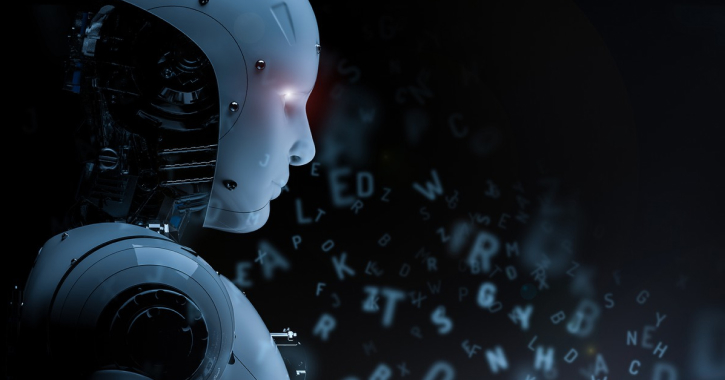
And there you have it!
We’ve been on quite a journey through the captivating world of Generative AI, haven’t we? From its theoretical foundations to its stunning applications, its potential challenges, and the exciting future that lies ahead, we’ve covered a lot of ground.
Generative AI’s Potential Impact
Let’s take a moment to reflect on the potential impact of Generative AI:
- It’s transforming the way we create and interact with content, from text and images to audio and music. It’s opening up new avenues for creativity and innovation.
- It’s revolutionizing industries, from healthcare and education to entertainment and beyond.
- But it’s not without its challenges. Issues of bias, ethics, resources, and intellectual property need to be addressed as we move forward.
Remember, Generative AI isn’t just about computers creating content. It’s about augmenting human capabilities and inspiring us to reach new heights of creativity and innovation.
Further Exploration and Learning
But don’t let your journey end here. There’s so much more to explore and learn:
- Dig deeper into the various AI models and algorithms. Understand how they work and what makes them tick.
- Try out some hands-on projects. There are plenty of resources and tools available online to help you get started.
- Stay informed about the latest advancements and debates in the field. Join online forums, attend webinars, and read up on recent research.
Remember, learning is your journey, not your destination. And when it comes to a field as dynamic and exciting as Generative AI, the journey is half the fun!
As we wrap up, let’s take a moment to marvel at the wonder of Generative AI. It’s a testament to human ingenuity, a tool that can unlock boundless creativity and innovation.
So keep exploring, keep learning, and keep innovating.
The world of Generative AI is yours to discover!
